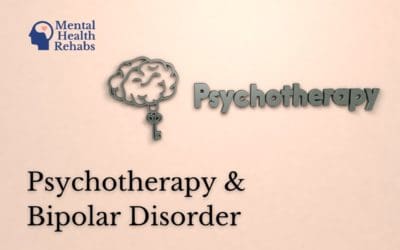Cyclothymia.

What is Cyclothymia?
Cyclothymia is a less common, milder subtype of bipolar disorder. It’s characterized by alternating periods of hypomania (elevated mood) and depression, each lasting days to months. Though these mood shifts can challenge daily functioning, they are not as intense as those experienced in bipolar I and II.
Symptoms
Cyclothymia presents as recurrent mood changes, with individuals switching between emotional highs and lows. These shifts can have up to a month of stable mood before the cycle starts again.
Hypomania Symptoms
Hypomania is a phase of increased energy and elevated mood. While it can enhance focus and productivity, it also carries potential risks, such as impulsive decision-making and risky behaviors. Symptoms include:
- Extremely high self-esteem and optimism
- Racing thoughts
- Agitation
- Increased physical activity
- Goal-driven behaviors
- Irritability and distractibility
Depressive Symptoms
This phase is marked by feelings of sadness, hopelessness, and diminished interest in previously enjoyed activities. Symptoms include:
- Social isolation
- Difficulty focusing
- Fatigue
- Lack of motivation
- Irritability and tearfulness
- In severe cases, suicidal thoughts
Causes
Cyclothymia typically occurs in adolescence or early adulthood, affecting men and women similarly. However, the cause of the cyclothymic disorder is unknown. Like other mood disorders, the cause is likely a combination of individual and environmental risk factors like these:
- Genetic Predisposition: A family history of mood disorders can increase the risk.
Traumatic Events: Experiences like sexual assault or traumatic events can trigger the onset. - Chronic Stress: Prolonged stress can make symptoms worse.
- Brain Changes: Differences in brain function, neurobiology, and structure might also play a role.
Risk Factors
People predisposed to cyclothymia are more likely to develop clinical symptoms if exposed to environmental risk factors, such as:
- Substance abuse
- Death of a loved one
- Childhood mistreatment or abuse
- Relationship changes
- Job loss or disability
- Pregnancy
Diagnosis
A comprehensive assessment, including medical tests and family history discussions, is essential to rule out other conditions and confirm a cyclothymia diagnosis.
The Diagnostic and Statistical Manual of Mental Disorders (DSM-5) establishes the following criteria for diagnosing cyclothymia:
- Recurrent hypomanic and depressive episodes over two years, present for at least half of that time
- Stable mood periods lasting less than two months
- Significant life disruption due to symptoms
- Symptoms that don’t align with other mental disorders
- Absence of substance-induced or medical condition-related symptoms
Cyclothymia vs. Bipolar Disorder
Both cyclothymia and bipolar disorder fall under the umbrella of mood disorders, characterized by periods of elevated mood and periods of depression. However, there are distinct differences between the two in terms of intensity, duration, and clinical presentation:
- The Intensity of Episodes: The elevated moods in cyclothymia, termed hypomania, are less severe than the full-blown mania seen in bipolar I disorder.
- The Duration of Episodes: The mood fluctuations in cyclothymia, both hypomanic and depressive, tend to be shorter-lived and can be interspersed with periods of stable mood.
- Clinical Presentation: While cyclothymia mood shifts can disrupt daily life, they don’t typically lead to the severe functional impairments of bipolar disorder. The episodes in cyclothymia don’t meet the full criteria for manic or major depressive episodes.
- Treatment and Management: Management for cyclothymia often involves mood stabilizers and psychotherapy. The goal is to moderate mood swings and improve overall functioning.
Management and Treatment
Managing cyclothymia effectively requires a comprehensive approach that addresses the disorder’s emotional and behavioral aspects. Early diagnosis and consistent treatment can significantly improve the quality of life for individuals with cyclothymia.
Medication
In many cases, medication is used to manage the symptoms of cyclothymia. Depending on each patient’s symptoms, they might be prescribed a combination of the following:
Mood Stabilizers
Antipsychotics
Anti-anxiety Medications
Psychotherapy
Psychotherapy can help patients manage their symptoms, avoiding episodes and hospitalizations. The most common psychotherapies used include:
Cognitive Behavioral Therapy (CBT)
Family Therapy
Interpersonal and Social Rhythm Therapy
Outlook
While cyclothymia is a chronic condition, many individuals experience periods of stability, especially with consistent treatment. Some may see their symptoms diminish over time, while others might experience an evolution of their condition into a more severe form of bipolar disorder.
Treatment adherence, even during periods of stability, is crucial. Regular therapy sessions and medication, as prescribed, can prevent the recurrence of severe episodes.
A combination of medical treatment, therapy, lifestyle adjustments, and a strong support system can enable individuals to navigate the ups and downs of the disorder and lead a balanced life.
Frequently Asked Questions (FAQs)
What does cyclothymic disorder look like in a person?
What is the difference between bipolar and cyclothymia?
What can trigger cyclothymia?
Related Conditions
- Bipolar Disorder
- Bipolar I
- Bipolar II
Related Articles
7 Bipolar Triggers & Warning Signs You Should Know
There are a lot of words a person could use to describe bipolar disorder -- and ‘predictable’ isn’t one of them. A disorder characterized by vacillations between episodes of high energy (mania) and depression, it’s impossible to know exactly when these episodes will...
What is the Role of Psychotherapy in the Treatment of Bipolar Disorder?
If you’re familiar with what bipolar disorder is--a mental illness that causes extreme mood swings that cycle between dramatic highs and lows which can result in sudden and extreme changes in behavior, mood, cognitive ability, energy levels, and more--it might be hard...
What Is a Bipolar Episode & How To Predict Them
Bipolar disorder is a mental illness estimated to affect 4.4% of Americans. Unfortunately, this serious mental illness is one shrouded with misconceptions that have resulted in harmful stigmas that have been difficult to shake. One of the best ways to reduce the...
Are You Born with Bipolar Disorder or Does it Develop?
Are you born with bipolar disorder or is it a mental illness that occurs when something happens to you? Science tells us that it’s a little bit of both. Your genes, the cell-building codes inherited from your parents, can lay the neurobiological groundwork that causes...
Don’t Struggle Alone.
Get Help Today.
Reaching out for help for yourself or a loved one can be overwhelming and stressful, but it doesn’t have to be. If you are struggling to find the right help, or even know where to get started, please feel free to call our 24/7 helpline.
Begin your mental health journey right now!




